Forza Motorsport review: a return to greatness for Turn 10’s next-generation racing game

In Forza Motorsport, racing, and all the cultural background behind it, return as the absolute stars. It took three games to find its racing line, but Turn 10 Studios hit the apex just right with this return to Forza’s racing sim origins.
Our Forza Motorsport hands-on preview told you pretty much everything you needed to know about the game. Cars and tracks are back at the core of the experience: you now have race weekends that feel pretty close to Formula 1, and a game design reminiscent of a role-playing game, pushing you to master your car, rather than putting together a huge garage.
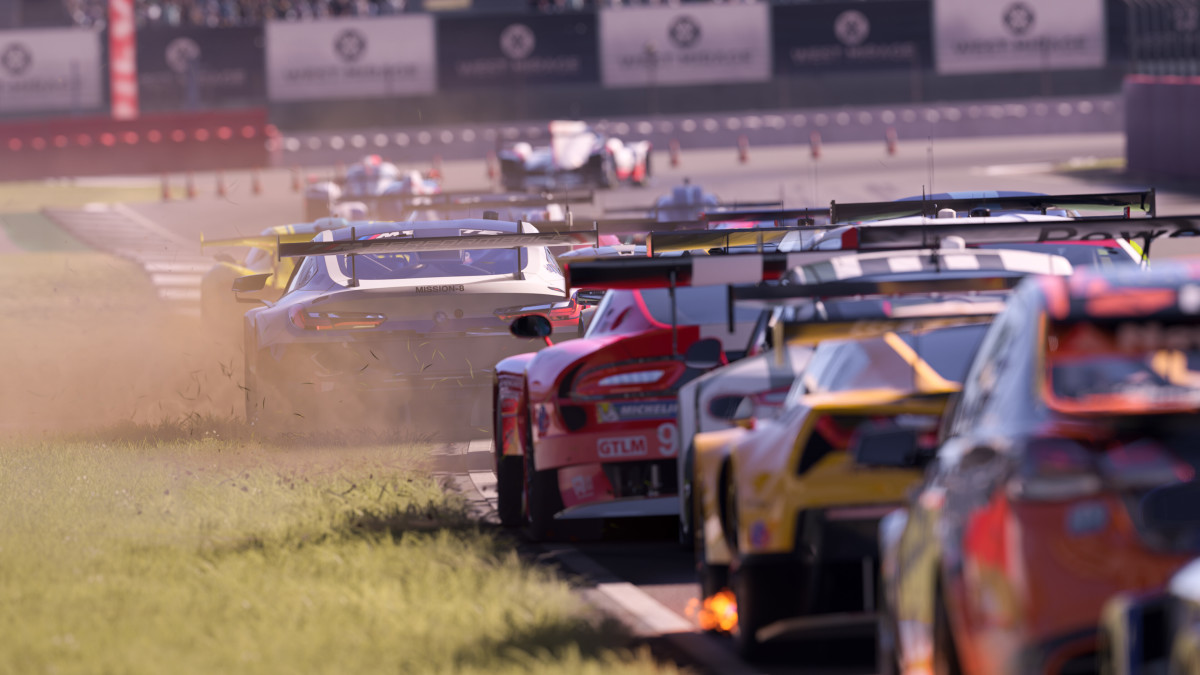
Let’s start with the campaign. Career mode’s structure is a bit flat, and the game soon realizes this, unlocking the more advanced events as quickly as it can - most likely for a higher challenge. There’s a distinct lack of context, which videos explaining each car category’s history fail to provide. On the other hand, the short intros offering details on tracks you’re about to tackle are pretty on point.
Variety is only there when it comes to extreme weather conditions. Every now and then, you’ll race through a haze that’s so thick you’ll need to brake just because you literally can’t see anything on the track. And the same goes for quieter conditions, like a night that’s simply very, very dark, or the sun blinding your vision as you reach a specific turn. It’s impressive both visually, and from a design standpoint, as these conditions require you to invest all your track knowledge acquired during the free practice. And ultimately trust your guts.
Wet tires are the only downside: you unlock them after a while, but whether you equip them or not, they don’t seem to alter the feeling or the performance too much.
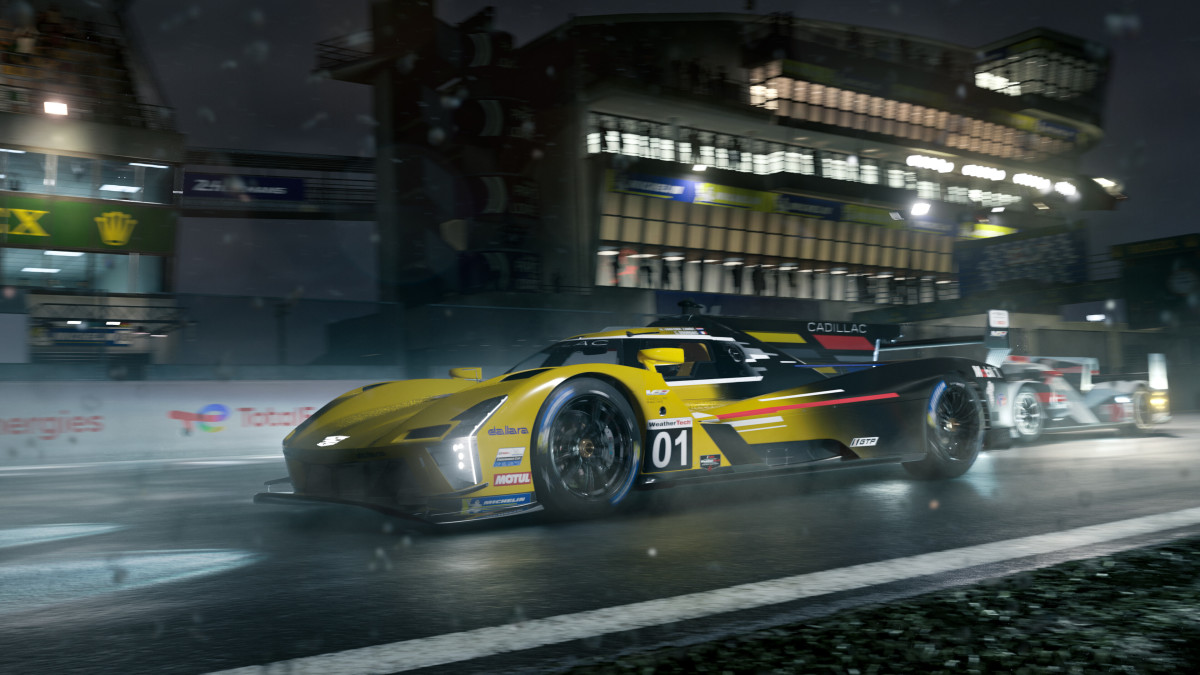
The lack of a qualifying lap is also a big missed opportunity. The system is there, and already working on free practice, and it’s a brilliant gimmick – especially the level-by-level progress of your car. That makes it even harder to understand why it’s not applied to qualifying, instead relegated to a simple menu before the race. You kind of have to make your own fun: if I beat the bonus target time, I put myself in the highest possible starting position (which is 3rd), as if I had scored a pole position.
This goes for rewinds, too, allowing you to replay bits of the race where you made a mistake on the fly. Whether or not you can have them is inextricably linked to the penalty system’s strictness. It would have been much better to have them separate, in the first place.
That said, there are only three levels of penalties and replays to choose from, while other racers are more granular when it comes to regulating the amount of replays available. Here’s just a binary choice between yes or no, and if you choose yes, you could easily find yourself entirely depending on the replays for the entirety of the race.
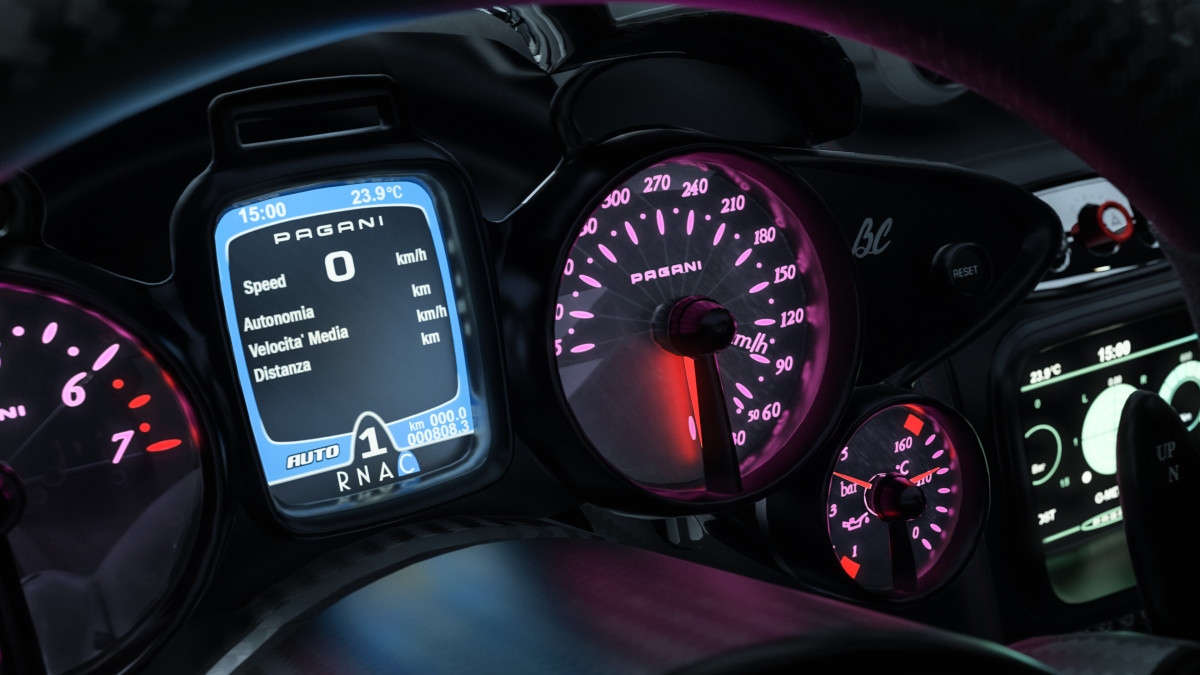
Despite our initial doubts, penalties work. The system recognizes all collisions, whether they are to your detriment or advantage, and especially track limits. The only issue might be with time penalties, as they’re not particularly effective. It’s as if the game is based on how F1 works, but it doesn’t have the same timings - one second is not enough to lose you a position.
It’s good at figuring out if you benefit from an off-track or if it was a pure mistake, while on collisions, with a bit of Briatore-like trickery, we’ve managed to keep title rivals in more comfortable positions without suffering adequate penalties. Carlos Sainz and his DRS trick might object that this is motorsport, too.
But at the end of the day, it’s a pretty nuanced system that shouldn’t displease anyone. As for the rest, there’s room for more tweaks in the coming months.
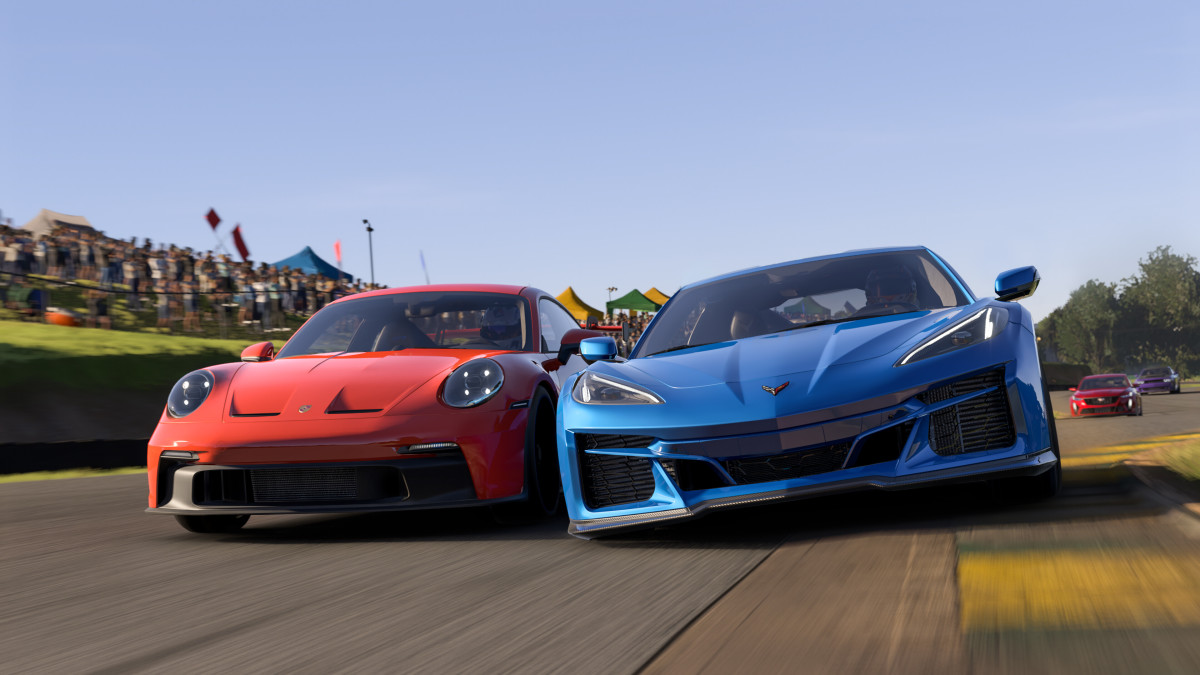
Compared to Assetto Corsa Competizione, Forza Motorsport is probably more of a controller racing game. However, every blade of grass you hit is a massive risk, and countersteering is a bet with yourself. The change in tone and feeling going from one car to another is impressive: a Porsche drifts and snakes along the track, and takes time to adapt to oversteering, while early-game Golf or Mazda cars make weight distribution crucial on every corner, and a heavier Mercedes lets you go full throttle on every exit. What’s even more surprising is that this variety in approach is there not only between classes, but also within the same class.
That’s what Turn 10 means when talking about caRPG – each car is almost a class in a dungeon crawler, each with its own quirks and skill tree. Each car in the game is a different game itself, requiring its own learning curve. And the learning curve is, for all intents and purposes, the most rewarding side of the experience.
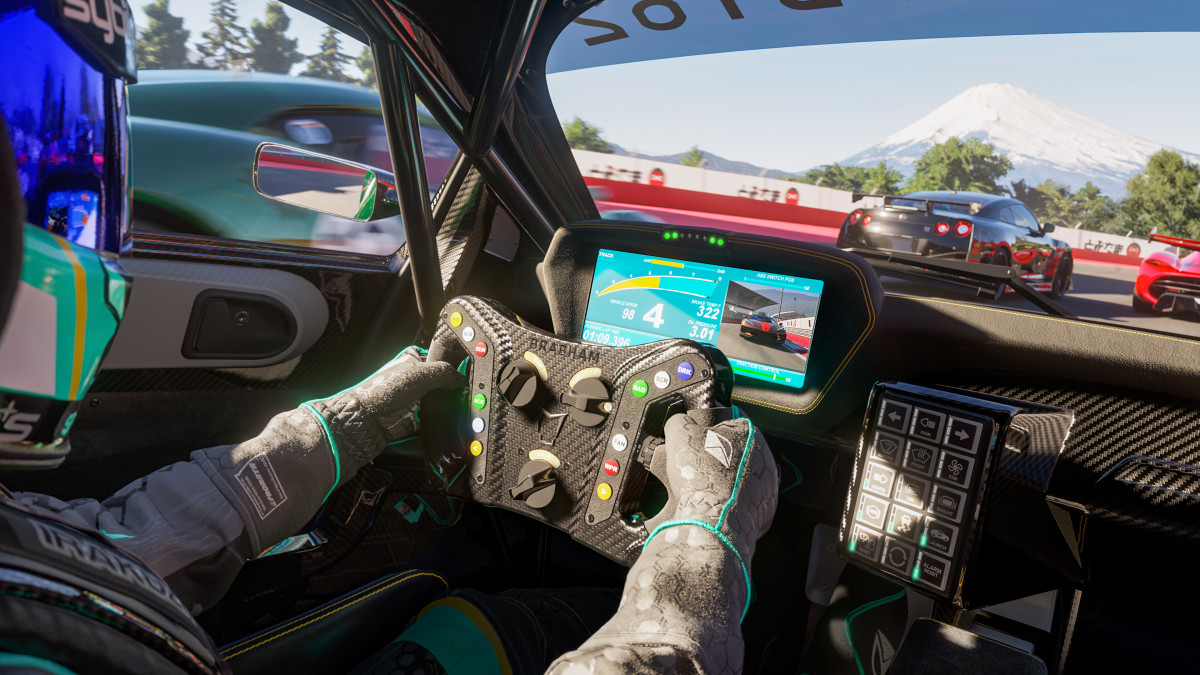
Each upgrade feels earned and well-deserved. The more you drive a car, the more CP you unlock to improve its performance. It’s not just a matter of winning races one way or another - the more time you dedicate to practicing before the race, the more points you earn, and the more prepared you are for the ultimate challenge.
It’s all part of the impressive motorsport culture the game is imbued in. You’ll need to study tracks sector by sector if you want to get the fastest lap and earn the most CP, and you’ll feel rewarded for it. Unlike other racers, you’ll never want to get to the race before you learn the most challenging turns, and how your car behaves on them. That also comes down to Turn 10’s track selection - while something’s still missing, you’ll get to race in Barcelona, Mugello, Suzuka – some of the best circuits around the world.
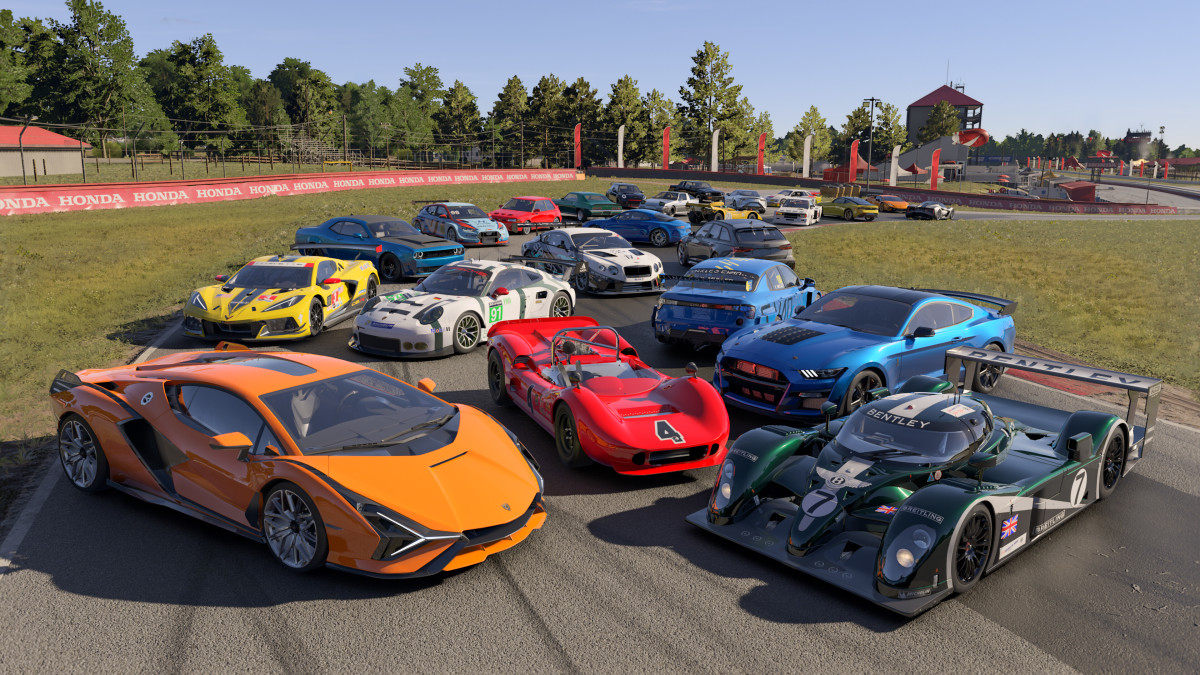
On the track, moving the grid still feels exclusively up to the player, as we often get to experience in racing games. However, it’s nice to see traffic and drivers struggling to get past each other in free practice. You often notice AI hesitating or touching the grass and unexpectedly losing speed for you to easily overtake. And that’s enough to make it some of the best AI we’ve seen roaming about in modern racers.
Ultimately, Turn 10 Studios has embraced the idea of Forza Motorsport as the foundation for its next-generation racing game. It’ll take iteration and carefully listening to players’ feedback to make it deeper and polish up the (few) lacking aspects, but these pit technicians will have it track-ready in no time.
Score: 8/10
Version tested: PC
- Visuals: 9/10
- Audio: 7/10
- Gameplay: 8/10
- Technical performance: 7/10
Forza Motorsport technical performance
Optimization on PC seems a tad problematic. Aside from a challenging Thrustmaster pedal set-up, the frame rate is on the low 70fps with an Nvidia RTX 3080 while resorting to a relatively low resolution of 2560x1080. Even at such low resolution, the game features aggressive dips between cutscenes and traffic at the start. This may be something to watch out for for those not playing on Xbox Series X, where performance is solid.
